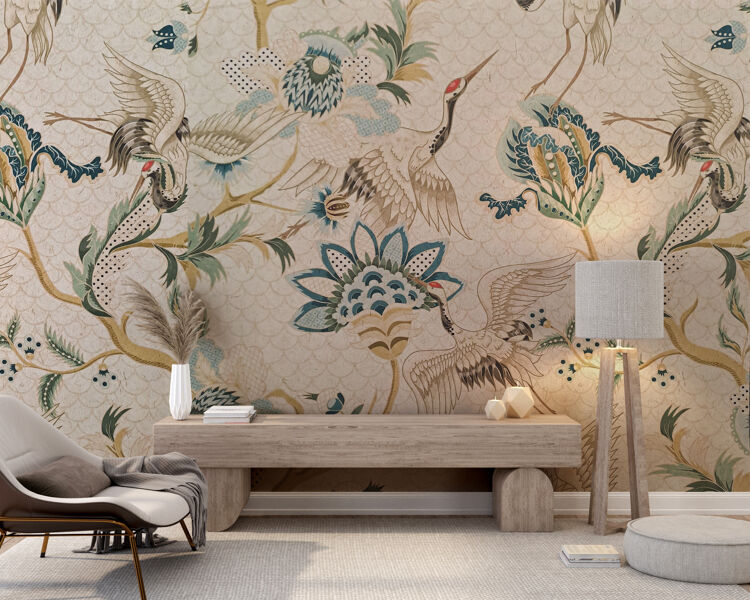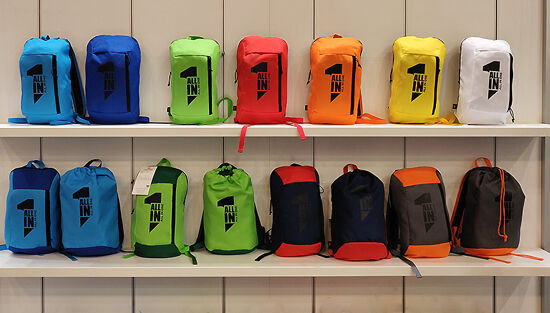New technologies and materials rewire and remap the silk road

Debbie McKeegan speaks to Thomas Poetz about the changes within the textile sector in the last 30 years. Thomas shares his insights and discusses the latest innovations in textile fibres.
In our latest interview we speak with Thomas Poetz who began his digital textile journey over 30 years ago. During that time, much has changed across the print industry which is gradually shifting toward a digital future at scale. As with all journey’s there have been many twists and turns and many new roads to market have emerged - some more significant than others. We caught up with Thomas to explore his insights and the latest innovations for textile fibres.
As Thomas himself suggests, "It is a good time. It's a time of change," and indeed, “the textile industry is set to unravel the threads of the past, to spin a new future for textile production across the entire supply chain. A future focused on the health of our planet and environmental manufacture.”
Not so long ago, the idea of a textile industry driven by digital technologies seemed futuristic. Today, we are on the verge of making this future a reality, thanks to passionate visionaries like Thomas Poetz.
In conversation, Thomas, with his three-decade of experience in the textile industry, talks about his journey from large format printing to textiles, and his passion for inkjet technologies. His unique experience has allowed him to compare digital to analogue printing and to see the tremendous potential digital now holds over its traditional counterpart.
The digital promise, as Thomas puts it, is hugely about sustainability, “Astonishingly, 20% of global water pollution stems from the textile industry, along with a hefty annual carbon footprint of 1,715 million tons. The ability to drastically reduce these numbers—95% less water consumption, significantly less CO2—is in the grasp of digital technologies.” Thomas argues that businesses should switch from conventional analogue textiles to a digital process, not just for efficiency and commercial agility, but to create a more sustainable future.
Materials are equally important to the future sustainability of textile production. Thomas has been supporting Norafin, a company that has been working diligently since 2005 to develop a technology that binds and fixes natural, cellulose fibres together using high-pressure water technology, importantly - without any adhesives or chemicals. They've created an innovative non-woven textile substrate that's not just biodegradable, but also printable with both UV-Gel and water-based inks. This disruptive technology could redefine the future of the wallcovering industry and beyond, it signposts the power of new fibre technologies and their potential to leverage and encourage environmental change.
Thomas is equally passionate about sustainable development and in conversation he explained how we can best leverage the UN’s SDG’s and he aligned the benefits of digital technologies with seven of the United Nations' Sustainable Development Goals (SDGs). These include quality education, clean water, economic growth, industry innovation, responsible consumption and production, climate action, and life on land.
As we progress towards more sustainable practices, Thomas urges industry players to make informed decisions—learn about what they buy, understand customer preferences, and choose sustainable materials and partners. He envisions a future where the industry is dotted with digital manufacturing hubs, leading to significant environmental benefits across multiple textile market sectors.
In summary, our conversation with Thomas Poetz illuminated the promise of digital printing technologies in the textile industry - a promise of efficiency, sustainability, and a better future for us all by merging ecological responsibility with industrial innovation.
Listen to the podcast here.
Here are 5 key takeaways from our conversation…
-
Technological Convergence: Norafin's pioneering work with natural fibres signals a shift towards tech-driven, eco-friendly manufacturing processes, setting a new industry benchmark.
-
Alignment with SDGs: Digital technologies in textile manufacturing align with multiple UN Sustainable Development Goals, propelling the industry towards a more ethical and sustainable future.
-
Informed Decision-Making: Emphasizing the need for industry stakeholders to be knowledgeable about their purchases, customer preferences, and the sustainability of materials and partners.
-
Future Vision: Thomas envisions an industry where digital manufacturing centres (Smart Hubs) become the go-to network for production - thus offering significant environmental advantages, on-demand, localised sourcing, reduced transportation, and enhanced sustainability.
-
Promise of Digital: The digital revolution promises not just improved efficiency and environmental friendliness, but also a paradigm shift in the very fabric of the textile industry.
Topics
Interested in joining our community?
Enquire today about joining your local FESPA Association or FESPA Direct
Recent news

Watch visitors views on the Personalisation Experience 2024!
The Personalisation Experience 2024 visitors express the significance in visiting the show and discovering the latest personalisation innovations and solutions along with the interactive smart wear factory, leading conference programme and ground breaking machinery and advanced materials.
_1.png?width=550)
How to differentiate your business from your competitors
Mark Coudray shares how print businesses can differentiate themselves from their competitors and emphasizes the importance of adding value to customers. It is important to determine if your customers are "In Market" phase. Having niche expertise facilitates the delivery of multiple value-added services.

Pros and Cons of using Screen Printing for promotional giveaways
Is screen printing still used for promotional gifts? Sonja Angerer shares which applications are best suited for screen printing and discusses the future of logo printing. She discusses the advantages and disadvantages of using this technique for promotional giveaways and the future of screen printing.
.png?width=550)
Hear visitors feedback on European Sign Expo 2024!
The European Sign Expo 2024 visitors share why it’s so important for them to see the latest in digital signage, built up lettering, soft signage and installation.